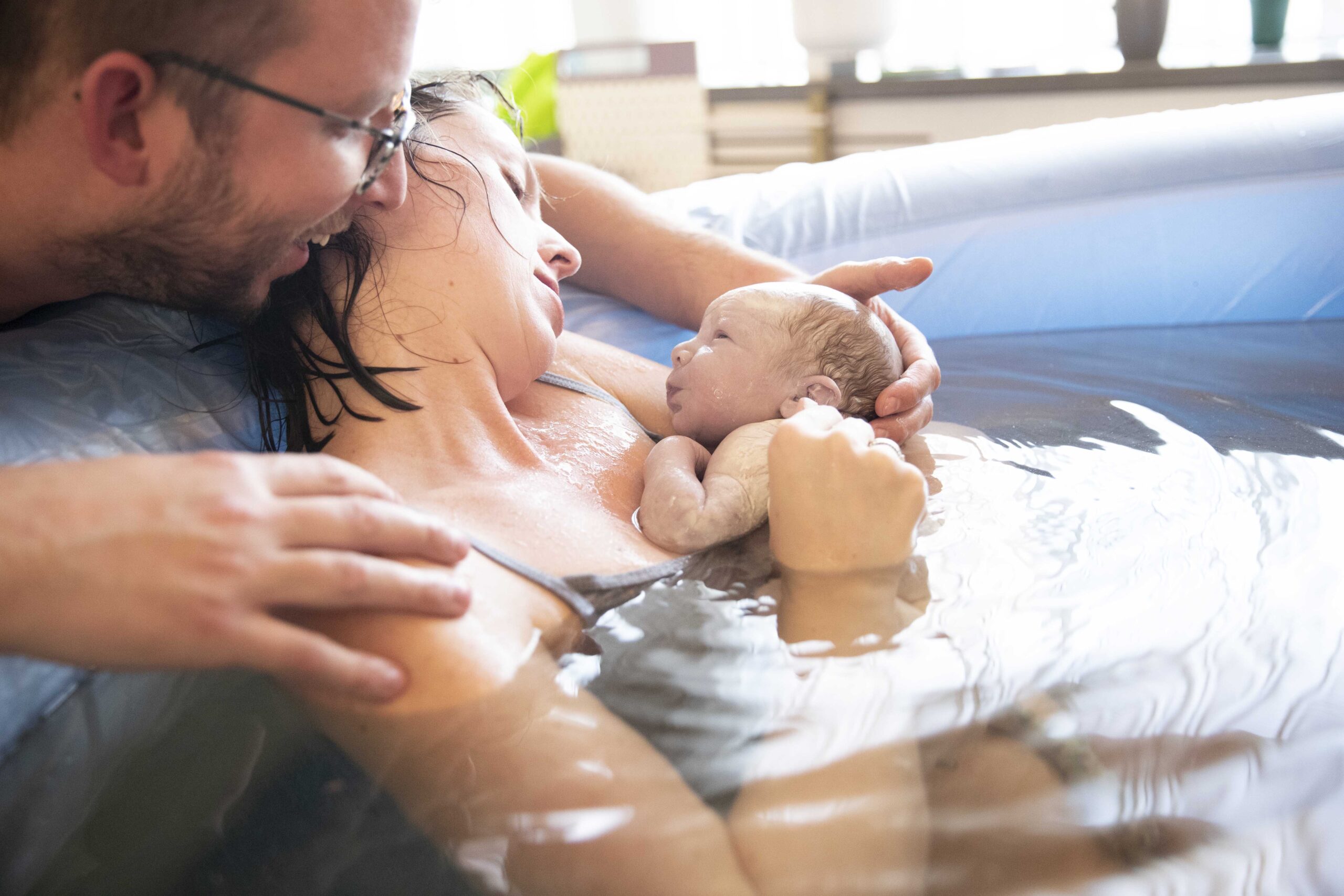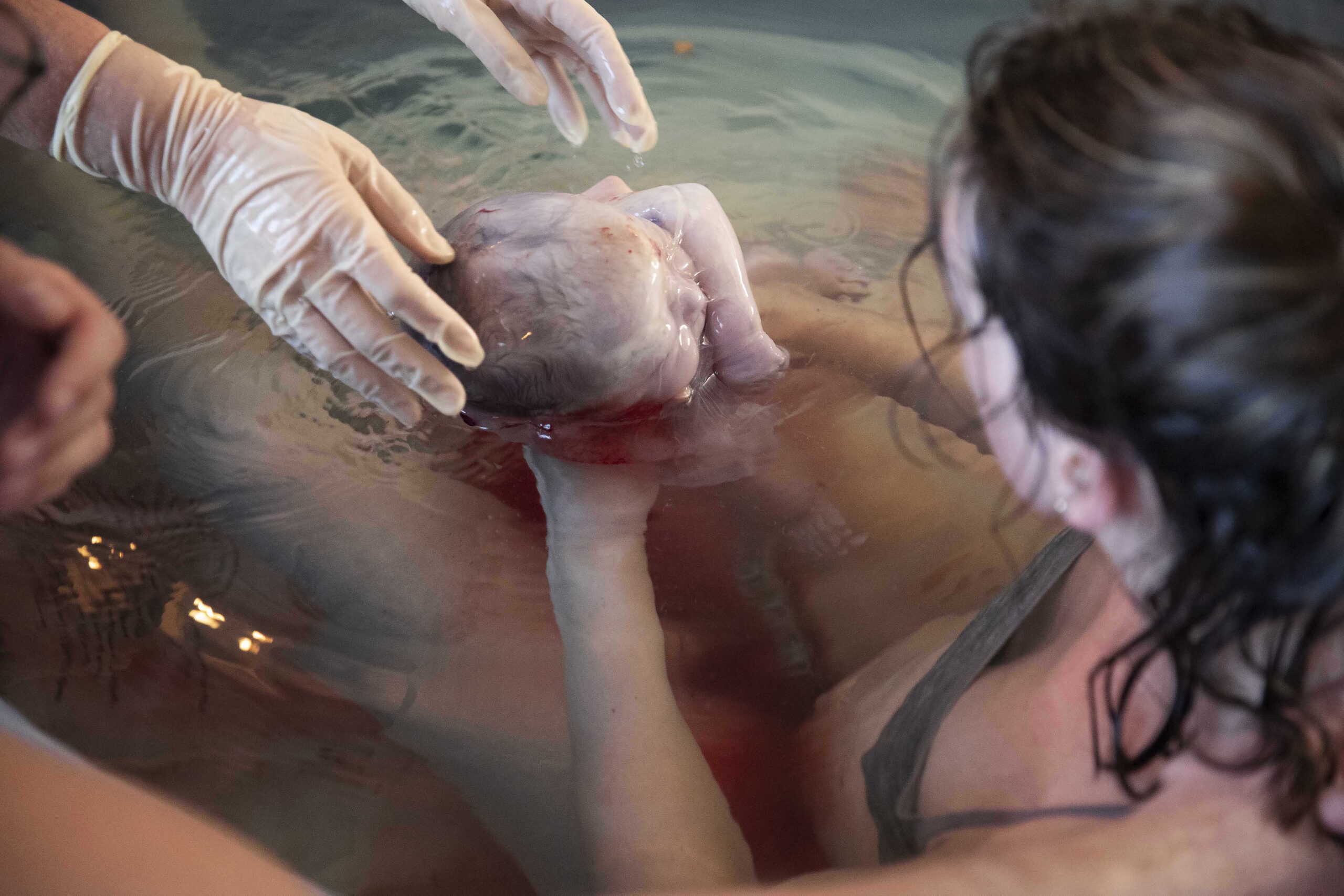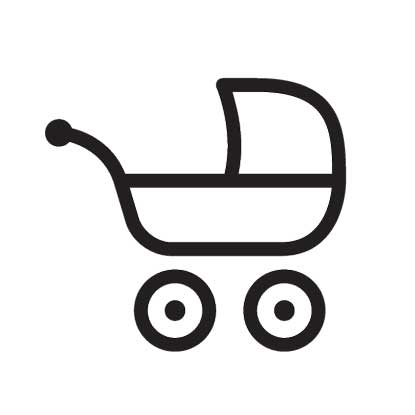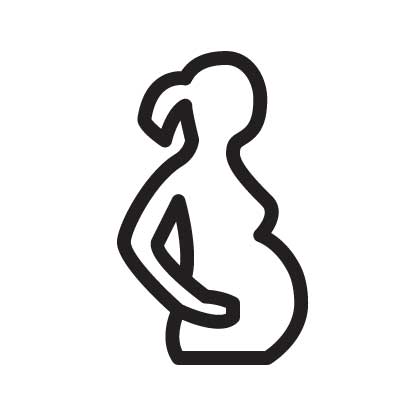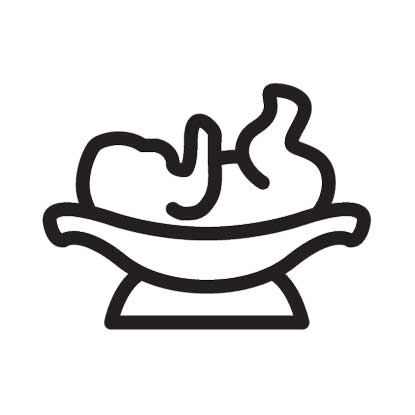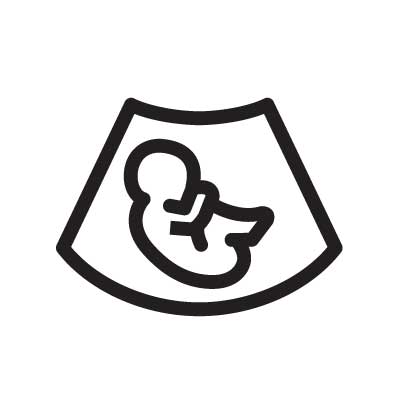Delivery
And then the moment is there: the birth of your child. We guide you during childbirth. In addition, we check the health of mother and child and support you where necessary. All this based on your wishes that you may have written down in a birth plan.
Good to know
Delivery call advice
Phone number for the delivery: 06-28069584
Listen carefully to the tape
In general:
These delivery call advices are valid from 37 weeks. If bleeding, contractions or loss of amniotic fluid occurs before 37 weeks, always call us immediately.
This advice is a general advice. I could be that, during consultation hours, we gave you more specific instructions for your personal situation. Don’t ever hesitate to call us when you need us, when you have questions of when you are insecure about something. You can call us 24 hours a day. You never call in vain.
Always call us in case of the below issues:
Bleeding:
A little bit of slimy blood loss is normal. If, however, you have bright-red blood loss, more than a menstruation, let us know immediately.
Contractions:
If this is your first child you should call when the contractions occur an hour long every 3-4 minutes and last about 1 minute. If this is your second child or more, you should call when the contractions occur an hour long every 5 minutes or sooner if you believe that the delivery is proceeding quickly.
A ‘pre-call’ to let us know that the delivery might have started, so that we can prepare ourselves, is not necessary. We are available for deliveries 24 hours per day.
Loss of amniotic fluid:
Your water can break without you having contractions. In case your water breaks it is important that you look at the color of the amniotic fluid. This should be clear.
However, sometimes the amniotic fluid has a green/brown color; in that case the baby defecated in the amniotic fluid.
Clear amniotic fluid:
During the day: let us know right away (until 10pm).
At night: you try to go to sleep and call us the next morning.
Green/brown amniotic fluid:
Call us immediately (day and night).
When the head of the baby is not engaged into the pelvis:
When the head of your baby is not engaged into the pelvis, it is important to lie down and call us immediately when you are loosing amniotic fluid. If this is the case, we will tell you during consultation hours.
At home or in the hospital
In the Netherland home deliveries are common, but there is always the option to choose a hospital delivery.
In principal, if there are no complications during your pregnancy or delivery, you are allowed to choose where you want to deliver: at home or in the hospital (policlinical). In both cases we can guide you during your delivery. If there are medical reasons why you have to deliver in the hospital, than the medical care for the delivery is usually placed in the hands of the hospital and done by someone from the delivery-rooms (either midwife or doctor).
Research done on half a million deliveries has shown that, as long as there is a good risk selection by a midwife, at home deliveries are just as safe as in the hospital. It is rarely necessary to go the hospital in a hurry during an at-home-delivery. Aside from this we have medical equipment at home in case of unexpected situations.
The choice for the location of the delivery is very personal. It is important that you deliver where you feel comfortable; because adrenaline (stresshormone) counteracts oxytocin (labor-hormone). For one person this might mean home, in your own environment where pregnant women and child have more control over everything. For the other, this means the hospital because it reliefs stress.
In case you choose for a policlinical delivery, you will experience the first part of the delivery at home. The moment you go to the hospital is decided through mutual agreement. Depending on the time of the delivery and how the delivery proceeded, you will go home about 2 hours after the baby is born or you will stay in the hospital for the night. Depending on your health-insurer you will sometimes have to pay part of your policlinical delivery.During the office-hour we will always ask you if you’ve made a choice. However, it is also possible to make the choice during the delivery.
We do policlinical deliveries in two hospitals: Maxima Medisch Centrum in Veldhoven and Catharina Ziekenhuis in Eindhoven. Both hospital provide tours of their delivery-rooms.
Information evening ‘We are pregnant’ – Maxima Medisch Centrum
Information evening ‘Bevallen in het Catharinaziekenhuis’
Ways to deliver
Maybe you have already read a lot about the delivery or you’ve gotten a lot of information during a pregnancy-course. What it feels like to deliver you won’t know until the moment is actually there.
This also counts for the different ways to deliver. It is good to know that there are different positions to absorb the contractions and to take during the expulsion-phase. Which position is comfortable for you we will try at the moment. It is important to change positions on a regular basis during delivery. This advances the dilation and your child will be better able to find its way through the pelvis.
In principal, we can guide a delivery in all possible positions, as long as it is medically responsible. Often we will provide you with advice during the delivery to take a certain position to help advance your delivery.
We always have a birthing-chair with us on which you can deliver. We’re also open to delivery in the bathtub. You do have to rent or buy a bath for this, since a regular bathtub is too small for a delivery. For more information you can come to us.
Coping with pain
Even though it sounds strange: pain is a useful tool during delivery. The pain of the contractions causes the body to provide endorphin (the body’s own morphine-like substance). This hormone causes the influence of adrenaline (stress-hormone) to decrease. As a result, the uterus becomes more susceptible to the contraction-hormone oxytocin. While the contractions increase in strength, a self-enhancing process is initiated. This is comparable to an avalanche that isn’t stopped until your child is finally born. Thus, pain is the necessary link to make the contractions stronger and allow the delivery to proceed normal and safe.
A positive conviction and attitude towards pain helps. It provides you with the strength to change the normal fear and insecurity to feelings of challenge and curiosity. Research has shown that woman are better able to cope with the pain of delivery if they are supported by someone they trust. Of course, your partner is very important in this. Aside from this, during your pregnancy we try to build a bond with you that allows you to have faith in us.
Pain medication is an option. Every woman has a different pain threshold and you can let us know when you’ve reached yours. We will help you to deal with the pain during you contractions. If, however, the pain becomes burdensome to the process, pain medication is the best option.
It is good to prepare yourself for the delivery so you know which ways there are to deal with the pain. During consultation hour we would like to talk to you about the possibilities; for example continuous guidance during delivery, different positions, sterile water-injections and medical painrelief.
For good information about how you can deal with pain and what the possibilities are for counteracting pain, you can read the brochure: ‘The birth of your baby, how do you deal with pain?’
The midwife’s tasks
Just like during the pregnancy, the most important task of the midwife during the delivery is the medical guarding of the process. Does the dilation go smoothly? Does the child’s heart beat fast enough? Is the amount of blood loss normal? As long as everything goes according to plan, we do your whole delivery.
Aside from this we offer you support. We help you absorb the contractions, get you a cold washcloth for your face, massage your back when you have back-contractions, advise you about different positions and get coffee for you and your partner.
From the moment that you call to tell us the delivery has started, the guidance will proceed along the lines of mutual agreement (or according to the birthplan). Generally, you will be able to cope with the contractions yourself during the early stages of the delivery, but if you want us to stay right away this is also a possibility.
If, during delivery, there is a reason to transfer care to the hospital, we will always go with you to make sure the transfer is properly taken care of. Even though the delivery will be the responsibility of the gynecologist, even in the hospital we will try to do part of the guidance ourselves.
Birth plan
A maternity care package (‘kraampakket’) from your insurance company (leave everything in the box please) ór
• 1 sterile umbilical cord clamp
• 2 packs of sterile wound compresses
• Small bottle of alcohol 70%
• 1 pack of ‘zigzag’ cotton swabs
• 2 packs of maternity pads
• 2 packs of maxi sanitary pads
• 2 net knickers
• (minimum of) 1 big mattress cover
• (minimum of) 5 matrress mats (‘onderlegger’)
• 1 new piece of soap or a soap pump
Furthermore:
• 2 digital thermometers (one for you and one for your baby)
• 2 metal hot water bottles (‘kruik’) with cover (no cherry seed or hot water bags)
• (minimum of ) 10 cotton diapers (‘hydrofiel luiers’)
• Bed raisers en a bed pan. Ask your maternity care organization where you can rent them.
For the baby:
• Diapers
• 2 caps
• Onesie (bodysuit, ‘rompertje’), clothes, socks (clothing size 50-56)
For you:
• Old shirt to deliver in
Extra for your home-delivery:
• large garbage bags
• 2 buckets
Bag for going to the hospital (both for home-delivery and hospital-delivery):
From 37 weeks it is advisable to prepare a bag for (possibly) going to the hospital. In this bag you put the things for yourself and the baby. If you deliver at home we can unpack all the things we need at that moment.
In general:
• Medical records from midwife
• Hospital identification card (‘ponsplaatje’). Have this made at the hospital of your choice.
• Car seat
• 2 euro coin
• Photo-camera and/or video-camera
For you:
• Old shirt to deliver in
• Toiletry bag
• Underwear and clean clothes, slippers and dressing gown
For the baby:
• Onesie (bodysuit, ‘rompertje’), clothes, socks
• Cap
• Jacket and wrap (‘omslagdoek’) for the baby
For your partner:
• Some clean clothes
• For example a toothbrush
You do not have to bring the maternity care package to the hospital.
Necessities for the delivery
A birthplan is a way for you (together) to prepare yourself for the upcoming delivery. You let each other (as partners) and your obstetric caregiver (midwife, gynaecologist) know what you want and what you don’t want during your delivery. It concerns here a ‘wish’-list, not a ‘demand’-list of, at a maximum, 1 A4.
We will discuss your birthplan during the consulting-hour. This way we find out what your expectations are and where you might have worries or concerns. We will then look at whether or not your wishes are realizable and, if necessary, what the alternatives are.
Research has shown that realistic expectations prior to the delivery lead to greater satisfaction after the delivery. The goal of the birthplan is to make your delivery-experience as positive as possible (given the medical circumstances).
We will do our best to take your wishes into account as best we can, but the medical condition of both mother and child will always be the determining factor.
For examples you can go to the following websites: geboorteplan KNOV or Als bevallen spannend is. These examples are in Dutch. You can also google ‘birthplan’ to find examples in English. There is also a possibility to make a visual birthplan, examples also to be found online.
